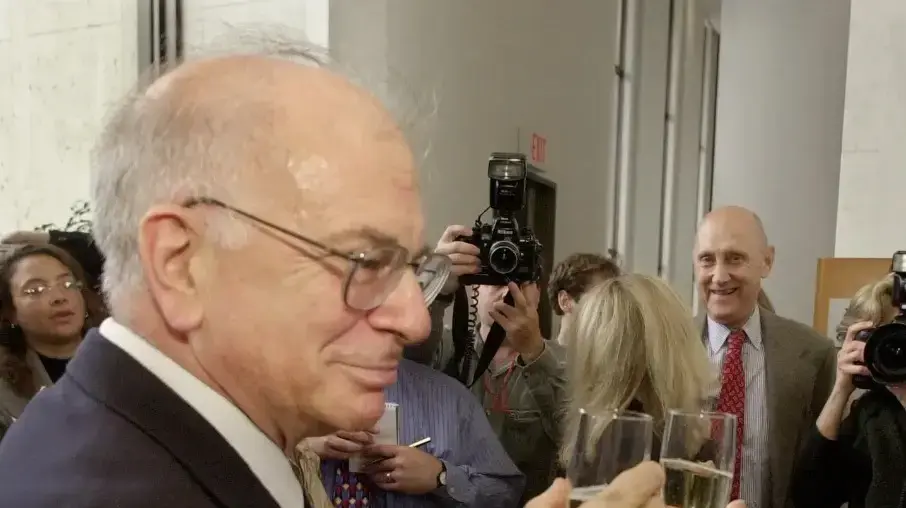If you read this text on your smartphone, you can thank John Goodenough, Stanley Whittingham and Akira Yoshino. The three researchers from the USA, Great Britain and Japan have developed rechargeable batteries based on lithium ions and received the Nobel Prize for Chemistry 2019 for this.
Lithium-ion batteries are so light and can generate so much voltage that they made mobile phones possible in the first place. Batteries used to weigh two tons, today it's 300 grams. Even laptops, e-cars or electric scooters would be unimaginable without the invention. It also provides the opportunity to power the world independently of fossil fuels.
The development of technology, which is to make oil as a raw material superfluous, began in the laboratories of the American oil company Exxon. Back in the 1970s, the company realized that oil reserves are finite. Electric cars could be an alternative, so the idea. To explore the potential, Exxon hired one of the leading scientists in the field of battery research.
Naina Helen Jama / TT News Agency / REUTERS
Stanley Whittingham had already discovered lithium as a material for his work. The substance, which was already clear to researchers, is predestined for use in batteries. It's the lightest solid metal out there. As a result, large quantities fit into a battery without it becoming very large or very heavy. In addition, the atoms are very reactive.
From the battery to the battery
Batteries work by creating a voltage between two poles. Decisive for this are negatively charged particles, so-called electrons, which migrate from minus to plus pole of the battery. The easier a substance emits electrons, the greater the voltage between the poles and the more current can flow.
Johan Jarnestad / The Royal Swedi
Lithium atoms readily release the electron from their outer shell
Lithium atoms readily give off an electron and therefore can generate a large current. That makes them, however, also very responsive.
They react with a large number of atoms and molecules, such as water - and easily catch fire. So far, airlines are pointing out to their passengers that smartphones with lithium-ion batteries can catch fire. The goal of the Nobel Prize researchers was to reduce the reactivity of lithium.
Whittingham took the first step. He provided the positive pole of his lithium battery with titanium disulfide. The substance is built up in layers, in the interstices of which the electrons can remain without reacting with the material. This resulted in a high voltage of two volts for batteries between the poles. By comparison, many of today's alkaline batteries are only 1.5 volts.
Johan Jarnestad / The Royal Swedi
In Whittingham's battery, electrons find shelter in layers of titanium disulfide
And there was another advantage: the electrons stored in the interstices of the titanium disulphide can always generate a current. When the battery is used, electrons travel from the lithium at the negative pole to the titanium disulfide at the positive pole. When loading, they hike back. However, the battery still had some weaknesses.
German-born researchers further developed the technique
Nevertheless, Whittingham's development at least to a small extent made it to the market. The battery was installed among other things in solar watches of a Swiss manufacturer. In the next step Whittingham wanted to develop a much larger battery, which can also drive cars. But Exxon stopped the battery research in the wake of the oil crisis in the early eighties for financial reasons.
Instead, German-born John Goodenough developed the technique at Oxford University in the UK. He discovered a substance that serves as a positive pole in lithium batteries: Cobaldoxid.
This also forms layers in which electrons can slip in and out again. As oxide, it also contains oxygen atoms. Because, in simple terms, the lithium at the negative pole of the battery wants to react with the oxygen at the positive pole, Goodenough's battery produces a high voltage of four volts.
Johan Jarnestad / The Royal Swedish Academy of Sciences
Goodenough produced a tremendous voltage of four volts
The Japanese Yoshino finally perfected the process. In his homeland, tech companies in the 1980s hoped for cheap, lightweight, rechargeable batteries for VCRs, cordless phones, and computers. Yoshino worked for the company Asahi Kasei to replace the problematic metallic lithium at the negative terminal of the batteries.
Petcoke brought the breakthrough
He focused on molecules based on carbon. Among other things, he changed petroleum coke so that it also arranges in layers, so could positively charged lithium ions remain in the gaps. Metallic lithium no longer plays a role in this model. The modern lithium-ion battery was created.
Johan Jarnestad / The Royal Swedi
The charge travels from the cavities at the negative pole to those at the positive pole
It can be recharged hundreds of times and can be found in almost all electronic devices that run without direct power supply. In addition to smartphones and laptops, pacemakers and hearing aids only work thanks to the development of Nobel Prize researchers. In addition, the idea that got the research rolling was only as relevant today as it has never been.
Without lithium batteries, no electricity from renewable sources
Electric cars, completely independent of oil, are already on our roads. In addition, lithium-ion batteries are an important basis for storing energy from wind turbines and solar systems. Without them, the nationwide supply of electricity from renewable sources would be difficult.
However, there are still weak points. On the one hand, human rights organizations denounce the circumstances under which workers - especially in developing countries - gain the metals for the batteries. On the other hand, the technology can be made even more efficient.
more on the subject
For example, researchers are working on replacing the lithium stored in the molecular layers of the electrodes with an even smaller material. Then the batteries could save even more energy.
"Over the next ten to twenty years, we will be able to increase the energy density of lithium-ion batteries by half to double that," says chemist Martin Winter, who heads the MEET battery research center in Münster. "Only then are we finished with all the finesse."







/cloudfront-eu-central-1.images.arcpublishing.com/prisa/WWFMH3RJQFHGDLP4L4JLWOGC6Y.jpg)

